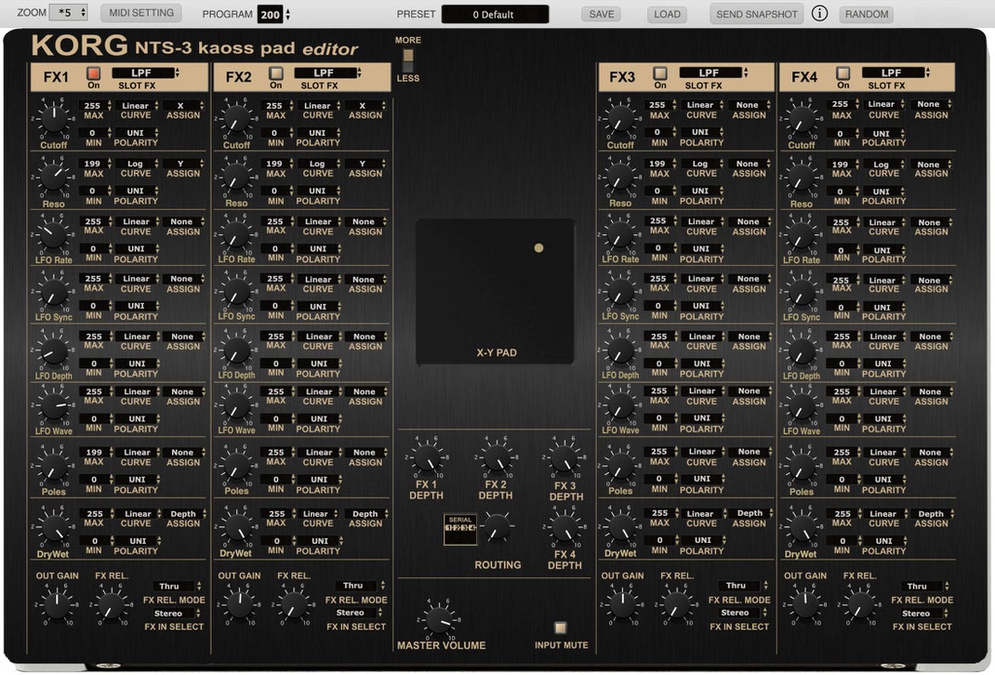Weeping Wall By Aqeel Aadam Has Been Updated
Having recently released Weeping Wall for iOS having previously been a desktop only plugin, Aqeel Aadam has released an update. The iOS version of Weeping Wall is currently available at the intro price of $8.99, increasing to $12.99 after the promotion. The desktop version is currently available as a ‘name your price’ basis, with a…
The post Weeping Wall By Aqeel Aadam Has Been Updated appeared first on The Beat Community.
https://thebeatcommunity.com/
Having recently released Weeping Wall for iOS having previously been a desktop only plugin, Aqeel Aadam has released an update. The iOS version of Weeping Wall is currently available at the intro price of $8.99, increasing to $12.99 after the promotion. The desktop version is currently available as a ‘name your price’ basis, with a minimum of $35.00.
What’s new in version 1.3.0:
- Looper number slider now displays which loopers are active, which looper is recording, etc.
- There are now tooltips through the UI (can be enabled/disabled in the Settings menu).
- The pitch can be quantized to just octaves or just octaves and fifths, to keep the pitch coherent while modulating/automating.
- Reversing loops no longer clicks and is therefore safer to modulate/automate.
- Hold time in macro mode is now longer (up to 60 seconds).
- Updated macro mode jitter to keep a relatively consistent and coherent loop length.
- Fixed some preferences not reloading properly when reopening a project or when reopening the UI.
A zen garden of responsive sound. Weeping Wall will listen to what you have to say, and chatter back words and phrases that it learns – a morphing ambient bed that reflects recency, with an organic feel at its heart.
Weeping Wall is a set of microloopers that automatically record based on input detection. Each new sound will be smoothly introduced and replace older sounds, resulting in a group of sounds that always reflect the most recent input. Each looper behaves independently – their size can vary and they will beat against each other as they phase. Up to 5 loopers are available to record into, with repitching and reverse controls as well. A dedicated “jitter” control allows you to randomly vary the size of each looper on each loop, creating variations that will never be heard again.
Weeping Wall can be used as an effect directly on a track, or as a send effect. WW is intended to be a modular tool; it doesn’t include reverb, EQ, saturation, flutter, etc., but it plays extremely well with them. WW is a brand new effect that can be used in any number of creative ways – you can place it fully wet in front of a reverb, place a hint of it behind a saturator, combine it with your favorite pitch modulation – whatever you can dream. WW is fully compatible with automation and modulators such as Ableton CV to broaden the horizons even further.
Weeping Wall has the following controls available:
- Threshold: The volume at which input will start recording into a looper.
- Looper size: The size of loopers, in seconds, from 0.1s to 3s.
- Jitter: A control for desynchronizing loops. Loops will be randomly shortened, and each one is free to change size independent of one another.
- Semitones: Repitch loops, with a range of +/- one octave.
- Reverse: A latching control to reverse looper playback.
- Looper number: Up to five loopers are available.
- Decay rate: How long loops will be held before fading away, from seconds to forever. This essentially controls whether WW functions more as a looper or as a delay.
- Independent dry and wet volumes: Use WW as an effect directly on your track, or as a send effect.
Watch the walkthrough HERE.
Weeping Wall is available to PC, Mac and iOS users (VST3, AU and AUv3).
For more information on Weeping Wall, click here:
NOTE: Some of the links you click on may be affiliated. Clicking and purchasing using these links helps support and fund The Beat Community. Thanks for your support.
The post Weeping Wall By Aqeel Aadam Has Been Updated appeared first on The Beat Community.
This is a syndicated post. To read more, click the source link above.






